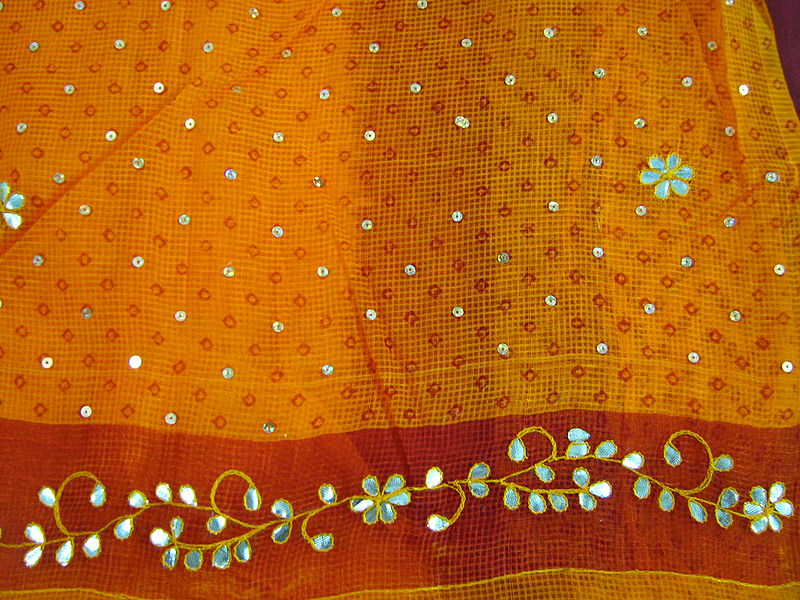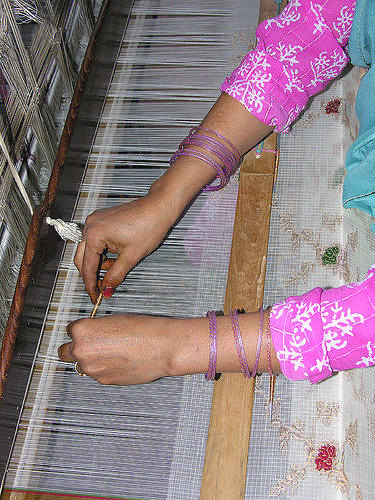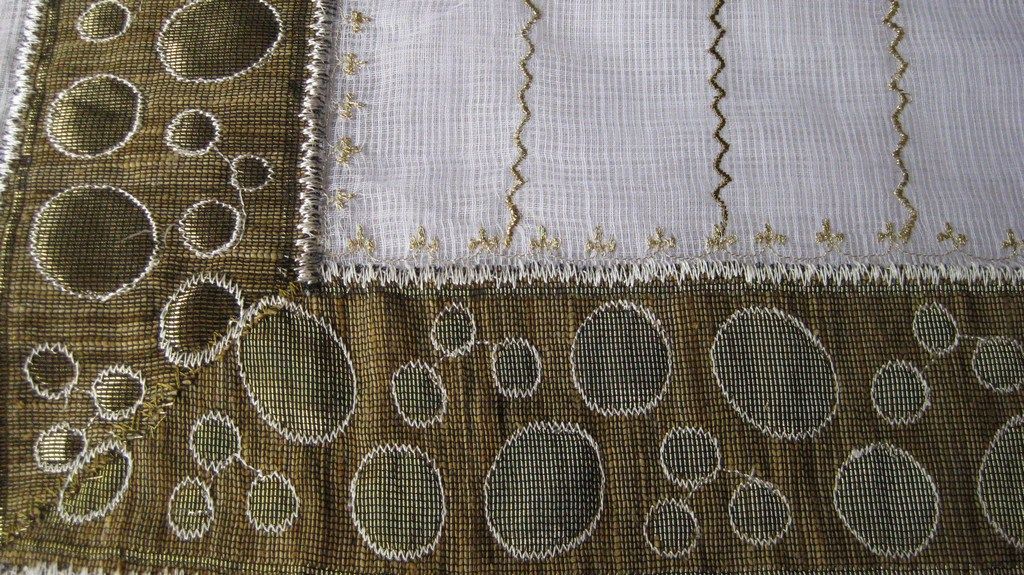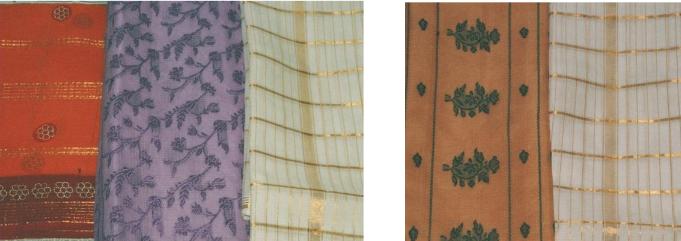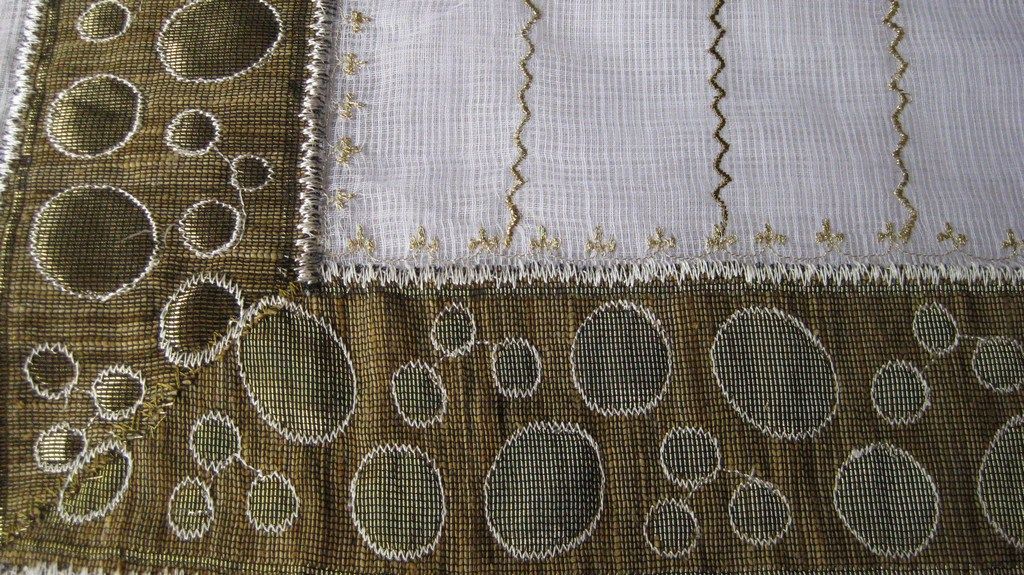
Kota Doria Sarees
Kota Doria (also spelled as Kota Dori) is a unique blend of cotton and silk in a square check pattern. The silk provides the shine while the cotton provides strength to the fabric. The name Kota Doria is taken from it place of origin, Kota in Rajasthan, India.
The checked pattern is termed as ‘khat’, and is one of the distinguishing feature of the Kota Doria fabric. Kota Doria is a very fine weave and weigh very less. Sarees, Salwar Kameez, Lehengas and Home furnishings are some popular uses of the fabric.
Origin and History
Kota Doria first originated in Mysore where the weavers who practiced this craft were known as ‘Masurias’. Subsequently between 17th and 18th century, the weavers were brought to Kota by Rao Kishore Singh who was a general in the Mughal Army during Shahjahan’s reign. The union between the two states brought about the invention of the ‘Kota-Masuria’ sarees, which were adorned for religious occasions since this type of material was considered auspicious. This type of saree became extremely popular and paved the way for the Kota Doria cloth, which went on to become one of the most fashionable fabrics in India.
Sources of Inspiration
The Rajasthani royalty favored this fabric since it portrayed effortless grace and style. The sarees were mostly white or beige in color. However, with recent changes and modifications being made to the fabric, endless amounts of color, and adornments of all kinds are included as well. Initially, the fabric was only made up of cotton, but later silk was weaved in as well, which made it more chic and refined.
Faces Behind the Fabric
The ‘Ansari’ community of the Hadauti region is largely known for practicing this craft apart from several other villages in southern Rajasthan like Bundi and Baran districts. The weavers are mostly of the Muslim community. With machine work taking over drastically, there has been a considerable downfall in the number of handlooms with which this fabric is woven. This has become the plight of many of these craftsmen who currently are struggling to make ends meet in spite of their mastery over this intricate and dexterous craft. Moreover, there is a lot of replication of the fabric being made which deludes the buyer into buying inauthentic material. However, the central government of Rajasthan has now come up with a system where a stamp would be printed on the authentic Kota Doria products which will be a clear mark of authenticity.
Varieties
Kota Doria sarees and suits are available in 3 different styles: basic, printed and zari. This makes it a versatile fabric since it can be worn for either a casual or a dressy occasion. The plain sarees have checks that are mainly made of a slightly rough cotton texture or just plain gold threads. Block printing is one of the new techniques being used when it comes to adorning Kota Doria sarees, which gives it a fresh feel look. And last but definitely not the least, is the zari work which gives the saree a more graceful and stylish appearance.
Present Day Scenario
In spite of the declining trend in manufacturing this fabric, there are close to 2500 families in various districts of Kota who are still practicing and keeping this skill alive. Even though there are some who appreciate the value and hard work that goes into this type of weaving, there has not been a great demand for it either.
Global Appeal
Kota doria, with its distinctiveness in style, has grown to become one of the popular Indian fabrics. Even though globally Indian silks and fabrics like khadi take a dominant position, Kota fabric is right next to them in line when it comes to its popularity in fashion.
Chronicles of the Future Untold
In order to preserve the ‘real’ India through its handicrafts, strong initiatives have been taken to preserve the essence of the Kota Doria fabric as well. Several NGOs have driven campaigns in Kota district encouraging the weavers to continue with their skill and produce the fabric. Furthermore, the government has taken steps to collaborate business ideas with these weavers in order to produce the fabric at a commercial and a more effective level. So, even though the progress may seem slow, it is definitely moving at a steady pace, and Kota Doria fabric may just become the modern face of Indian fashion.
Maintenance
It is not difficult to maintain this fabric since it is mostly made up of cotton. Normal hand wash would be fine.
Interesting Facts and Comparisons
- Onion and water paste is used as one of the raw materials to strengthen the yarn of the fabric.
- The word ‘Doria’ basically means thread.
- Since the fabric is woven on authentic and traditional handlooms, one can notice the uneven edges at the ends of the fabric.
Reference
Categories: Textiles

